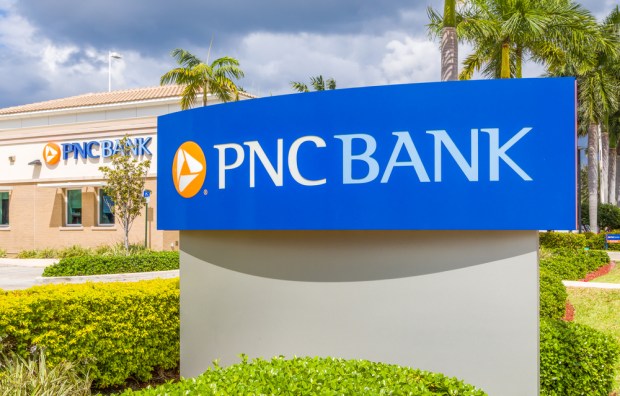Mobile Wallets Help Banks Prep For Millennial CFOs

B2B payments traditionally take longer than B2C to embrace innovative solutions, but when it comes to mobile wallets, even consumers took a bit longer to be convinced than some expected.
Solutions like Apple Pay have struggled to gain traction, thanks to confusion over how it works and security concerns. The most recent Apple Pay usage stats, provided by PYMNTS.com and InfoScout, find that adoption of the technology isn’t just flatlining — it’s actually going down.
So there may be cause for concern that if mobile wallets are struggling with consumers, then there’s no way they’d take off with corporate payers. But financial services industry players aren’t wavering in their faith that mobile wallets can play their role in B2B payments.
PNC Bank is the latest FI to enable its commercial cards for use in mobile wallets, including Apple Pay, Samsung Pay and Android Pay. The bank announced earlier this month that convenience, easier reconciliation and boosted security are all major benefits to mobile payments for the enterprise. Jeff Felser, senior vice president and head of Treasury Management Payables at PNC Bank, recently told PYMNTS that mobile payments are part of broader changes in the corporate payments sphere.
“The B2B payments landscape continues to evolve,” he said. “We understand where our customers’ preferences are relative to doing business with us, when they want to do business, and mobile in general is a great digital channel that will continue to expand.”
The clearest use case for mobile payments for corporations is in travel and expense management. A mobile employee needs a similarly mobile payment solution, but mobile wallets, Felser noted, offer businesses more than just mobility.
Security, for one, is key.
“When you think about the card space, you think about the disruption that occurs with merchant data breaches, and that happens more frequently than any of us would like,” the executive said. “The end result is you need to generate a replacement card — which can be a challenging act to fulfill while you have a traveling employee on the move.”
Mobile wallets’ ability to generate a unique, 16-digit card number — that isn’t the card number linked to the physical card in the wallet — means that sensitive card information isn’t exposed at every transaction made.
“If you can convert more card usage to mobile wallets, you won’t have to reissue that 16-digit card number,” Felser noted. “It won’t have been compromised anywhere along the process.”
The biometric authentication feature associated with mobile wallets is also a promising feature, he said, adding that the security features of mobile payments mean the technology could gain traction in other areas of B2B payments.
“You tie a card account number to an employee’s fingerprint on the iPhone, and there’s a lot more security that opens up use cases beyond corporate travel,” said Felser.
Use of p-cards in a mobile wallet, for instance, are a significant opportunity, especially for smaller-value transactions. An employee that has to run out and buy a part could use a p-card in a mobile wallet solution that can streamline reconciliation and tracking of that purchase for corporate managers. Otherwise, going the traditional route means generating a purchase order, receiving and processing an invoice and manually making payments to a supplier — significant time wasted, Felser said
Like any new technology, adoption of mobile payments could see resistance. But Felser said PNC Bank’s corporate clients have shown pretty positive reactions so far to this new capability.
“They’re eager; they’re excited,” he said of those reactions. “And yes, it will definitely cause our clients to take a look at their policies and procedures and to make sure they make updates that reflect that a mobile device now may also be an important corporate asset.”
As Felser said, mobile payment capabilities are only part of changing business payment landscapes, particularly seen in the commercial card space, where the executive also added that virtual card technologies are growing in prominence. One of the largest drivers of commercial card growth is finding out ways to promote card acceptance among suppliers — that, Felser added, is where virtual cards may gain new traction.
“We think there is a lot more capability to expand usage in the broad B2B supplier community,” he said, “and in ensuring the value proposition exists for everyone in the transaction.”
That includes facilitating virtual card use to charging a corporate buyer at the time of order, not just at the time of goods delivered, as is typical today. Getting paid faster could play a significant role in getting more vendors to accept card payments, said Felser.
Overall, progress in commercial cards must be made with a focus on a younger workforce. That’s why mobile payments and virtual technologies have such potential, the executive noted.
“We see trends changing to adjust to what I would call is our next-gen of customers in the corporate space,” Felser stated. “The next wave of treasurers and CFOs and business leaders is the millennial generation that are already adopters of mobile technology.”
“The new treasurer, CFO, controller, is on the move, they’re mobile and they want to have access to accounts,” he continued. “For us, we’re prepared to support the CFO of the future.”
